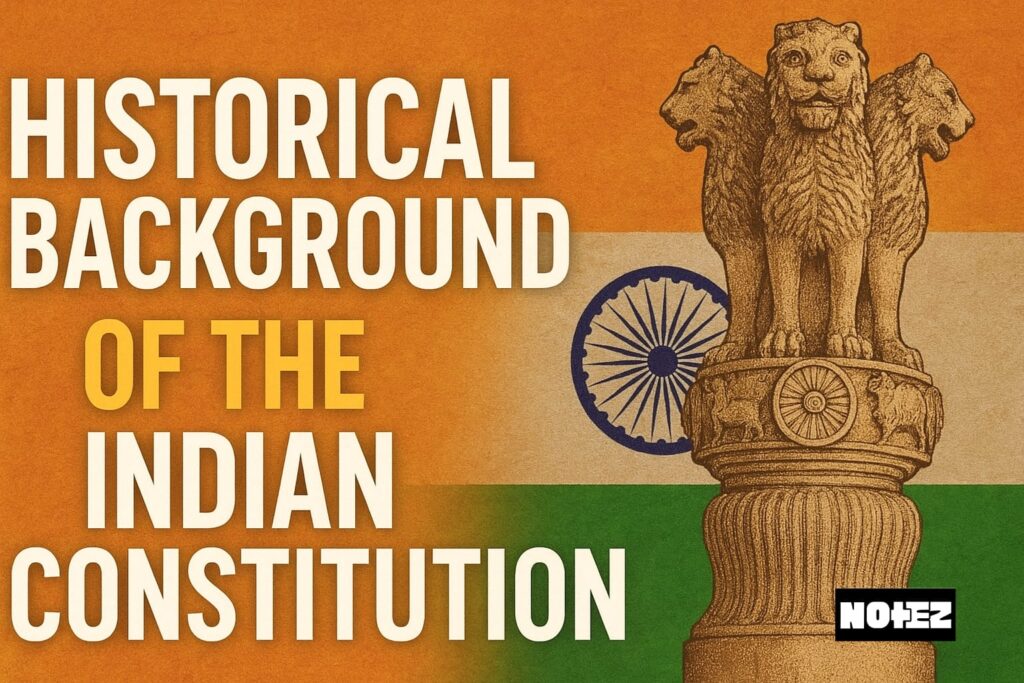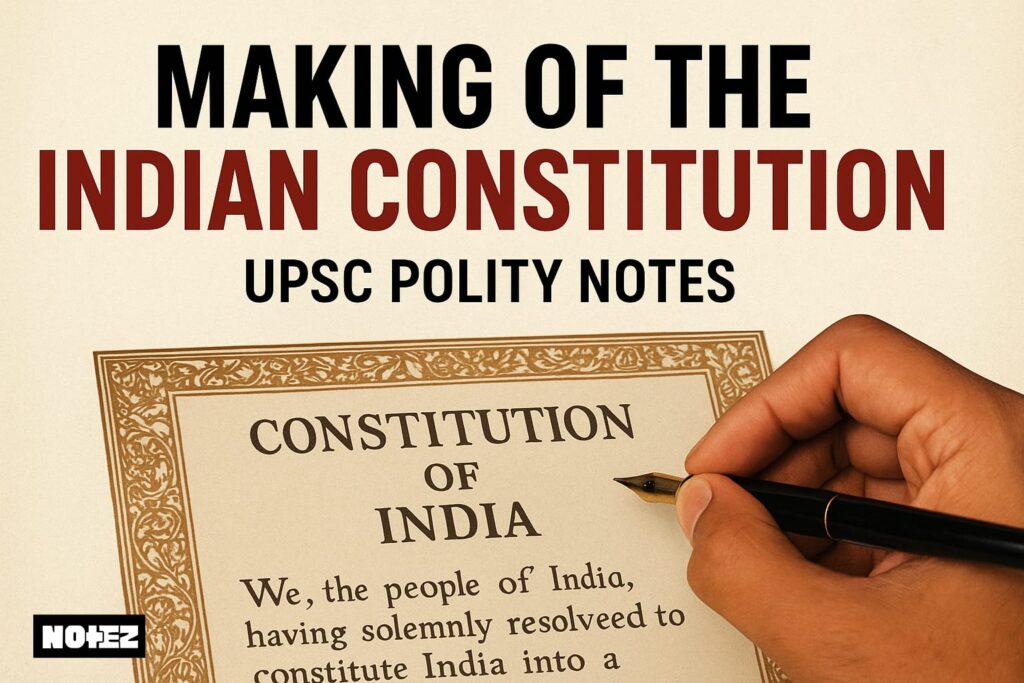India’s Constitution did not emerge in a vacuum; it is the product of a long historical journey of colonial rule, political struggles, and incremental reforms. Each law or reform introduced by the British left behind lessons—some restrictive, some empowering—which shaped the framework of our present Constitution.
Let’s walk through this evolution.
—
The Regulating Act, 1773
Why it matters: It was the first serious attempt by the British Parliament to regulate the East India Company’s affairs in India.
Key Features:
Governor of Bengal became the Governor-General of Bengal (Warren Hastings was the first).
A Supreme Court was established at Calcutta.
Impact: This Act planted the seed of centralized administration, a principle that later shaped India’s federal structure.
—
Pitt’s India Act, 1784
Key Features:
Set up a dual system of control—Company’s commercial affairs under the Court of Directors, political affairs under a new Board of Control.
Impact: Marked the beginning of direct parliamentary oversight of Indian governance.
—
Charter Acts (1793 – 1853)
1793 & 1813: Ended trade monopoly of the East India Company (except tea and trade with China).
1833: Governor-General of Bengal became Governor-General of India (Lord William Bentinck was the first). Law-making was centralized.
1853: For the first time, legislative and executive functions were separated. Competitive exams for civil services introduced.
Impact: These Acts gradually diluted Company’s powers and sowed seeds of a professional, merit-based bureaucracy.
—
Government of India Act, 1858
Context: After the Revolt of 1857.
Key Features:
Ended Company rule; British Crown assumed direct control.
Secretary of State for India was appointed.
Impact: Shifted India from Company rule to formal British Raj, centralizing authority under the Crown.
—
Indian Councils Act, 1861
Key Features:
Expanded legislative councils by including Indians in a limited manner.
Introduced the principle of legislative devolution to provinces.
Impact: First attempt at involving Indians in law-making, though only as token representation.
—
Indian Councils Acts of 1892 & 1909 (Morley-Minto Reforms)
1892: Expanded councils slightly, allowed discussion of budget.
1909: Introduced separate electorates for Muslims, first time Indians were included in the Executive Council of the Viceroy.
Impact: Representation widened, but communal politics institutionalized—a move that had long-term consequences.
—
Government of India Act, 1919 (Montagu-Chelmsford Reforms)
Key Features:
Dyarchy introduced at provincial level: subjects divided into ‘transferred’ (handled by Indians) and ‘reserved’ (handled by British officials).
Bicameral legislature at the Centre.
Impact: For the first time, Indians were given limited responsibility in governance. But dyarchy proved impractical.
—
Government of India Act, 1935
Why it’s crucial: Served as the blueprint for the Indian Constitution.
Key Features:
Provincial autonomy granted; dyarchy abolished at provincial level.
Federation envisaged, though never materialized.
Bicameralism extended, federal court established.
Impact: Provided real self-government in provinces and introduced features like federalism, bicameralism, and emergency provisions that influenced our Constitution.
—
Indian Independence Act, 1947
Key Features:
Partition of India and creation of two independent dominions.
Constituent Assembly empowered to frame the Constitution.
Impact: Paved the way for India’s transition from colonial rule to a sovereign democracy.
—
Conclusion
The making of the Indian Constitution was not just an intellectual exercise of the Constituent Assembly but the culmination of two centuries of experiments, reforms, and political struggles. Each Act—whether restrictive or reformative—added a layer of experience. While the British sought to consolidate power, Indians drew inspiration and lessons, ultimately shaping a Constitution that is democratic, federal, and inclusive.
The historical background thus serves not only as a reminder of colonial control but also as a record of India’s gradual political awakening.
—
✨ UPSC Tip: Remember the chronology of these Acts and their impact. Many Prelims and Mains questions revolve around tracing the evolution from 1773 to 1947.


